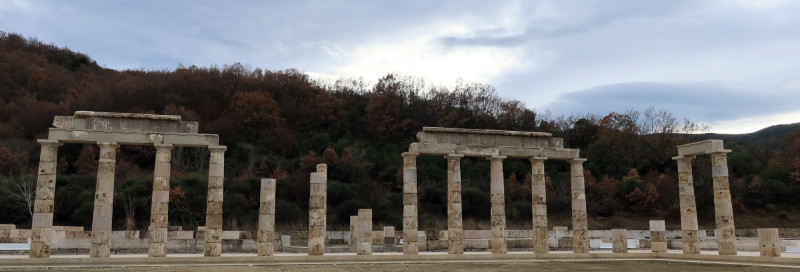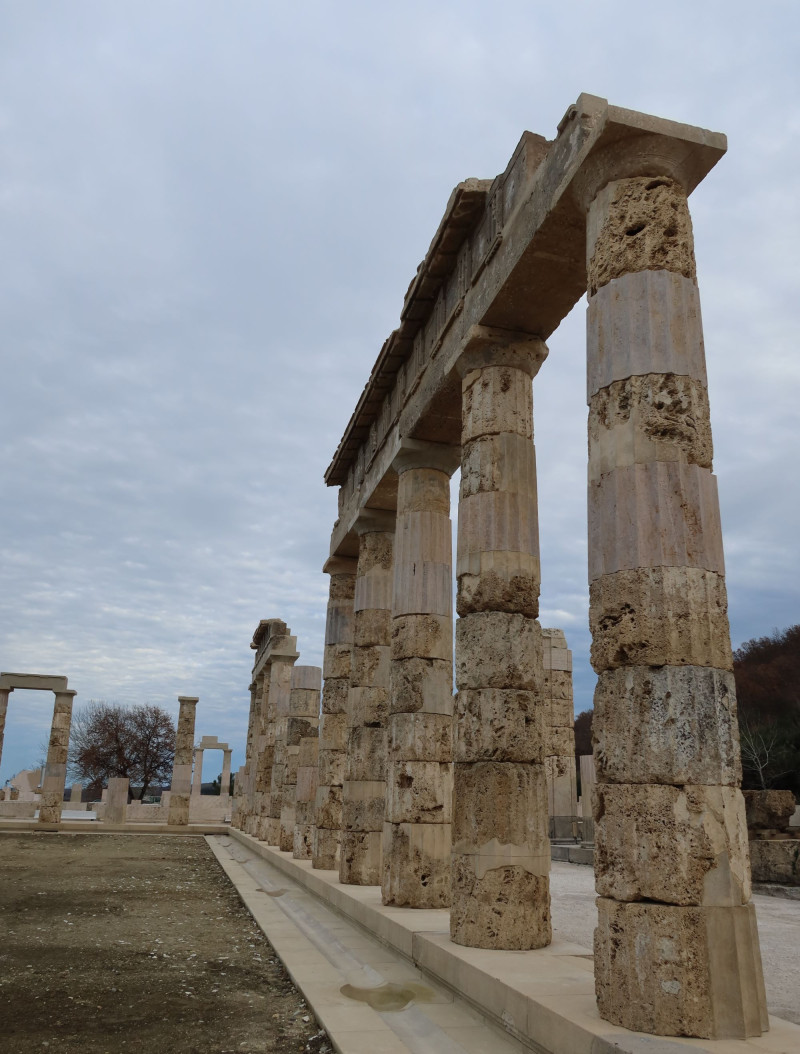The “kingdom” of the Goats with an area of approx. 15,000 sq.m. it is the largest building of classical Greece.
Tomorrow, Friday, at one o’clock in the afternoon, the restored and restored palace of Philip II in Aiges will be inaugurated, in the presence of the Prime Minister.
THE Kyriakos Mitsotakis will inaugurate the recently restored palace of the Goats and will be guided by the Minister of Culture Lina Mendoni and the Honorary Superintendent of Antiquities Angeliki Kottaridis.
Center of the large building program, with which Philip II (359-336 BC) modernized and upgraded the Aigesthe royal metropolis of the Macedonians, is the palace, the “kingdom” of the Goats – with its ancient name – with an area of approx. 15,000 sq.m.
It’s about largest building of classical Greece.
A simple and functional building and at the same time monumental and imposing, the archetypal edifice is characterized by the luxury of the materials, the ingenuity and perfection of the execution, the unexpected achievements of technology and, at the same time, by the geometric purity of the form that forms an ensemble of incomparable tranquility, elegance and harmony, where everything is subordinated to the charm of measure.
With the monumental propylon, which evokes a sanctuary, the impressive two-story arcades of the facade that open onto the city and invite citizens to make use of their space, the mega peristyle, around which the banqueting areas are organized, the dome which according to the epigraphs was a sanctuary of Patrous Herakles, the library/archive and the smaller western peristyle that served auxiliary uses (palaestra etc.) the “kingdom” foundation of the Goats housed all those structures that were necessary for the exercise of multi-level public authority.
With 16 Doric columns on each side, the mega peristyle of the Goats, which epitomizes the concept of the square, is the first of its kind. Having an area of 4,000 square meters, it could accommodate at least 8,000 people and could function as a gathering place for Macedonians. The gathering place of citizens takes on the image of a courtyard and the word “courtyard” becomes synonymous with the concept of royalty.
The architect fused traditional elements and radical inventions in a highly inventive way The building began to be constructed in the middle of the 4th century. and was completed in 336 BC, when Philip II, at the height of his omnipotence celebration, was assassinated as he entered the neighboring theater.
In the great peristyle of the palace, Alexander III was proclaimed king of the Macedonians΄ (Arrian, Al. A. 1.25.1 – 2 ) and began the course that would change the world.
The palace is exemplary destroyed in the middle of the 2nd century BC, after the definitive destruction of the kingdom by the Romans of Metellus, in 148 BC.
What remained of the stone pelting, which continued for centuries, it was revealed by excavation that began in 1865 and continued throughout the 20th century, the 1930s and the 1950s-1960s.
The project of maintenance, fixing, restoration and restoration of the monument carried out by the competent Ephorate of Antiquities of Imathia under its own supervision. It lasted from 2007 to 2023 as a co-financed project of successive European programs, with a total budget of 20,300,000 euros.
The project was extended to the entire area of the monument (15,000 sq.m.) and in its surrounding area in a total area of approx. 25,000 sq.m.
The remains were rediscovered, excavated and stratigraphically documented, preserved and systematically recorded of all mobile finds and stone architectural members (several tens of thousands), documentation and fixing of the surviving elements in their place, maintenance and aesthetic restoration of the mosaics and the marble inlays of the floors (approx. 1,400 sq.m.), fixing, completion and restoration of foundations and footings, restoration of colonnades in situ and restoration of part of the upper floor of the facade in the atrium of the museum, as well as the large project of supporting the slope on which the monument is located.
Scientifically and administratively responsible for the project in all phases was Dr. Angeliki Kottaridisarchaeologist and supervisors of the final phase were: Olympia Felekidou, civil engineer-restorer, Kiki Kyrittopoulou, architect, Eva Kontogoulidou, archaeologist, Kostas Tzimboulas, antiquities conservator, Giorgos Konstantinopoulos, craftsman.
The number of IDOH employees ranged from 70-160.
Source: Skai
I have worked as a journalist for over 10 years, and my work has been featured on many different news websites. I am also an author, and my work has been published in several books. I specialize in opinion writing, and I often write about current events and controversial topics. I am a very well-rounded writer, and I have a lot of experience in different areas of journalism. I am a very hard worker, and I am always willing to put in the extra effort to get the job done.












